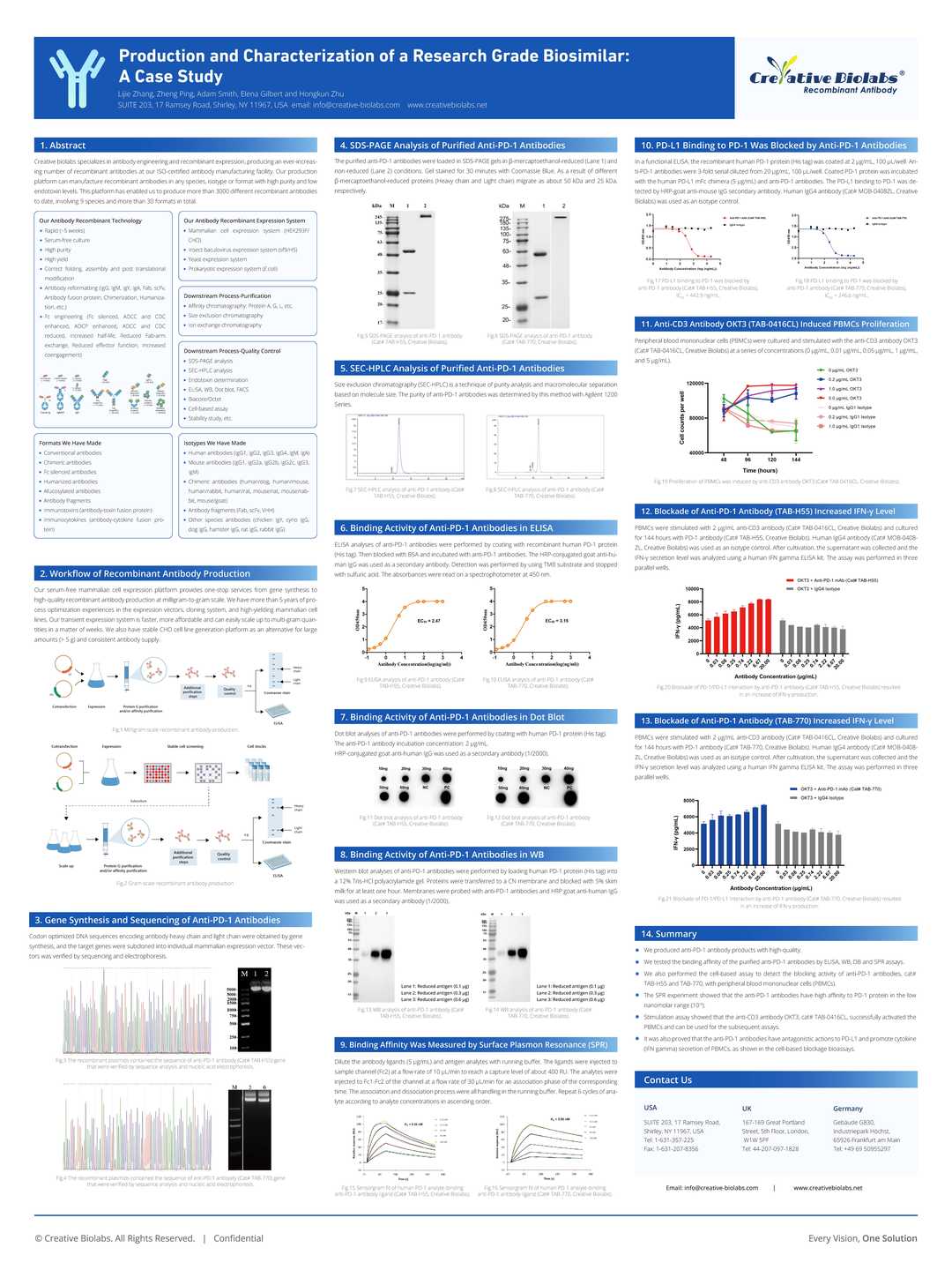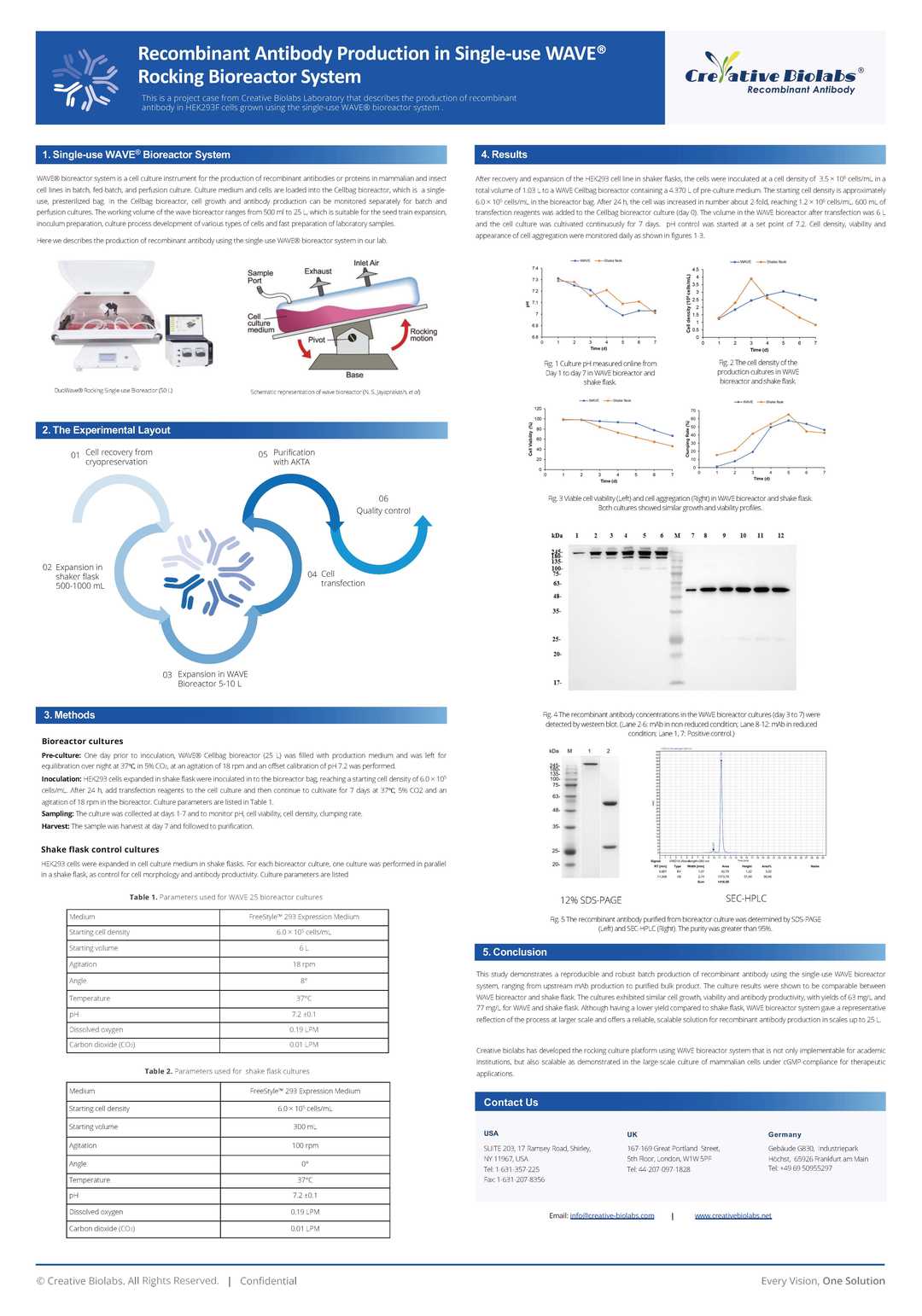Rabbit Anti-PARP1 Recombinant Antibody (VS3-CJ107)
CAT#: VS3-CJ107
This product is a rabbit antibody that recognizes PARP1.









Specifications
- Immunogen
- Synthetic peptide of PARP1 human protein (N-terminus)
- Host Species
- Rabbit
- Type
- Rabbit IgG
- Specificity
- Human PARP1
- Species Reactivity
- Human
- Applications
- WB, ELISA
- Conjugate
- Unconjugated
Product Property
- Purification
- Protein G affinity purified
- Purity
- >95% as determined by SDS-PAGE
- Format
- Liquid
- Concentration
- 1 mg/mL (lot specific)
- Buffer
- 50% Glycerol, 1% BSA, PBS, pH7.4.
- Preservative
- 0.02% sodium azide
- Storage
- Store at 4°C for short term. Aliquot and store at -20°C for long term. Avoid repeated freeze/thaw cycles.
- Shipping
- Ice packs
Applications
- Application Notes
- This antibody has been tested for use in ELISA (1:5000-1:20000), Western Blot (1:5000-1:10000).
Target
- Alternative Names
- PARP; PARS; PPOL; ADPRT; ARTD1; ADPRT1; PARP-1; ADPRT 1; pADPRT-1; Poly-PARP
- Gene ID
- 142
- UniProt ID
- P09874
- Sequence Similarities
- Belongs to the ARTD/PARP family.
- Cellular Localization
- Nucleus, Chromosome, Cytoplasm
- Post Translation Modifications
- Poly-ADP-ribosylated on serine, glutamate and aspartate residues by autocatalysis (PubMed:19764761, PubMed:20388712, PubMed:22582261).
Auto-ADP-ribosylation on serine takes place following interaction with HPF1 (PubMed:28190768, PubMed:34625544).
Auto poly-ADP-ribosylation on serine residues promotes its dissociation from chromatin (PubMed:15607977, PubMed:30675909, PubMed:32358582, PubMed:34210965, PubMed:34625544).
Poly-ADP-ribosylated by PARP2; poly-ADP-ribosylation mediates the recruitment of CHD1L to DNA damage sites (PubMed:19661379).
Mono-ADP-ribosylated at Lys-521 by SIRT6 in response to oxidative stress, promoting recruitment to double-strand breaks (DSBs) sites (PubMed:21680843, PubMed:22753495, PubMed:27568560).
Phosphorylated at Thr-594 by PRKDC in response to DNA damage following virus infection, promoting its translocation to the cytosol (PubMed:10467406, PubMed:35460603).
Phosphorylated by TXK (PubMed:17177976).
S-nitrosylated, leading to inhibit transcription regulation activity.
Proteolytically cleaved by caspase-3 (CASP3) and caspase-7 (CASP7) in response to apoptosis to generate the Poly [ADP-ribose] polymerase 1, processed N-terminus and Poly [ADP-ribose] polymerase 1, processed C-terminus forms (PubMed:7596430, PubMed:10497198, PubMed:16374543, PubMed:22464733, PubMed:22451931, PubMed:33168626, PubMed:35104452).
CASP3-mediated cleavage is promoted by the TP53/p53-induced long non-coding RNA SPARCLE, which binds PARP1 in response to genotoxic stress (PubMed:35104452).
Sumoylated with SUMO1 or SUMO2 by PIAS4 following prolonged residence (trapping) to chromatin (PubMed:35013556).
Sumoylation promotes ubiquitination by RNF4 and removal from chromatin by VCP/p97 (PubMed:35013556).
Ubiquitinated by RNF4 following sumoylation by PIAS4 in response to prolonged residence (trapping) to chromatin (PubMed:35013556).
Ubiquitination promotes removal from chromatin by VCP/p97 (PubMed:35013556).
- Protein Refseq
- NP_001609.2
- Function
- Poly-ADP-ribosyltransferase that mediates poly-ADP-ribosylation of proteins and plays a key role in DNA repair (PubMed:17177976, PubMed:18172500, PubMed:20388712, PubMed:19344625, PubMed:19661379, PubMed:21680843, PubMed:23230272, PubMed:25043379, PubMed:26344098, PubMed:32028527, PubMed:30104678, PubMed:33186521, PubMed:31796734, PubMed:32358582, PubMed:34737271, PubMed:34465625, PubMed:18055453, PubMed:22582261, PubMed:26626479, PubMed:26626480, PubMed:32241924).
Mediates glutamate, aspartate, serine, histidine or tyrosine ADP-ribosylation of proteins: the ADP-D-ribosyl group of NAD+ is transferred to the acceptor carboxyl group of target residues and further ADP-ribosyl groups are transferred to the 2'-position of the terminal adenosine moiety, building up a polymer with an average chain length of 20-30 units (PubMed:7852410, PubMed:9315851, PubMed:19764761, PubMed:25043379, PubMed:28190768, PubMed:29954836, PubMed:35393539).
Serine ADP-ribosylation of proteins constitutes the primary form of ADP-ribosylation of proteins in response to DNA damage (PubMed:33186521, PubMed:34874266).
Specificity for the different amino acids is conferred by interacting factors, such as HPF1 and NMNAT1 (PubMed:28190768, PubMed:29954836, PubMed:32028527, PubMed:33186521, PubMed:34874266, PubMed:34625544, PubMed:33589610).
Following interaction with HPF1, catalyzes serine ADP-ribosylation of target proteins; HPF1 confers serine specificity by completing the PARP1 active site (PubMed:28190768, PubMed:29954836, PubMed:32028527, PubMed:33186521, PubMed:34874266, PubMed:34625544, PubMed:33589610).
Also catalyzes tyrosine ADP-ribosylation of target proteins following interaction with HPF1 (PubMed:30257210, PubMed:29954836).
Following interaction with NMNAT1, catalyzes glutamate and aspartate ADP-ribosylation of target proteins; NMNAT1 confers glutamate and aspartate specificity (By similarity).
PARP1 initiates the repair of DNA breaks: recognizes and binds DNA breaks within chromatin and recruits HPF1, licensing serine ADP-ribosylation of target proteins, such as histones (H2BS6ADPr and H3S10ADPr), thereby promoting decompaction of chromatin and the recruitment of repair factors leading to the reparation of DNA strand breaks (PubMed:17177976, PubMed:18172500, PubMed:19344625, PubMed:19661379, PubMed:23230272, PubMed:27067600, PubMed:34874266, PubMed:34465625).
HPF1 initiates serine ADP-ribosylation but restricts the polymerase activity of PARP1 in order to limit the length of poly-ADP-ribose chains (PubMed:34732825, PubMed:33683197, PubMed:34795260).
In addition to base excision repair (BER) pathway, also involved in double-strand breaks (DSBs) repair: together with TIMELESS, accumulates at DNA damage sites and promotes homologous recombination repair by mediating poly-ADP-ribosylation (PubMed:26344098, PubMed:30356214).
Mediates the poly-ADP-ribosylation of a number of proteins, including itself, APLF, CHFR and NFAT5 (PubMed:17396150, PubMed:19764761, PubMed:34049076).
Customer Review
There are currently no Customer reviews or questions for VS3-CJ107. Click the button above to contact us or submit your feedback about this product.
Submit Your Publication
Published with our product? Submit your paper and receive a 10% discount on your next order! Share your research to earn exclusive rewards.
Downloadable Resources
Download resources about recombinant antibody development and antibody engineering to boost your research.
Product Notes
This is a product of Creative Biolabs' Hi-Affi™ recombinant antibody portfolio, which has several benefits including:
• Increased sensitivity
• Confirmed specificity
• High repeatability
• Excellent batch-to-batch consistency
• Sustainable supply
• Animal-free production
See more details about Hi-Affi™ recombinant antibody benefits.
Datasheet
MSDS
COA
Certificate of Analysis LookupTo download a Certificate of Analysis, please enter a lot number in the search box below. Note: Certificate of Analysis not available for kit components.
Recommended Dilution Buffer
- CAT
- Product Name
See other products for "PARP1"
Select a product category from the dropdown menu below to view related products.
| CAT | Product Name | Application | Type |
|---|---|---|---|
| MOR-2594 | Hi-Affi™ Recombinant Rabbit Anti-PARP1 Monoclonal Antibody (DS2594AB) | FC, ICC, IHC-P, IP, WB | IgG |
| CAT | Product Name | Application | Type |
|---|---|---|---|
| MRO-1165-CN | Recombinant Rabbit Anti-PARP1 Monoclonal Antibody (CBACN-425) | WB, IF, IHC, FC | Rabbit IgG |
| MRO-1166-CN | Recombinant Mouse Anti-PARP1 Monoclonal Antibody (A0-D11) | WB, IF, IHC, FC | Mouse IgG1 |
| ZG-0499U | Rabbit Anti-PARP1 Recombinant Antibody (clone 7C11) | ELISA, WB, IHC | Rabbit IgG |
| ZG-0500U | Rabbit Anti-PARP1 Recombinant Antibody (clone 8C7) | ELISA, WB, IHC, IF, FC | Rabbit IgG |
| ZG-0501U | Rabbit Anti-PARP1 Recombinant Antibody (clone 5H8) | ELISA, IHC | Rabbit IgG |
| CAT | Product Name | Application | Type |
|---|---|---|---|
| VS-0724-YC1341 | AbPlus™ Anti-PARP1 Magnetic Beads (VS-0724-YC1341) | IP, Protein Purification |
| CAT | Product Name | Application | Type |
|---|---|---|---|
| VS-1024-XY366 | Rabbit Anti-NHP PARP1 Recombinant Antibody (VS-1024-XY366) | WB, ICC, IP | Rabbit IgG |
| CAT | Product Name | Application | Type |
|---|---|---|---|
| VS13-YC868 | CytoStream™ Rabbit Anti-PARP1 Recombinant Antibody (VS13-YC868) | WB, ICC, IF, IP, FC | Rabbit IgG |
| CAT | Product Name | Application | Type |
|---|---|---|---|
| VS-0325-XY1565 | Anti-PARP1 Immunohistochemistry Kit | IHC | |
| VS-0525-XY5185 | Anti-Mouse PARP1 Immunohistochemistry Kit | IHC | |
| VS-0525-XY5184 | Anti-Human PARP1 Immunohistochemistry Kit | IHC |
Popular Products

Application: IP, IF, FuncS, FC, Neut, ELISA, IHC

Application: WB, IF, IP, Neut, FuncS, ELISA, FC

Application: ELISA, IP, FC, FuncS, Neut, IF, IHC

Application: FuncS, IF, Neut, ELISA, FC, IP, ICC

Application: WB, IF, FuncS
-3.jpg)
Application: Neut

Application: ELISA, FuncS, RIA, IP, IF, IHC, IA, Block
For research use only. Not intended for any clinical use. No products from Creative Biolabs may be resold, modified for resale or used to manufacture commercial products without prior written approval from Creative Biolabs.
This site is protected by reCAPTCHA and the Google Privacy Policy and Terms of Service apply.





























